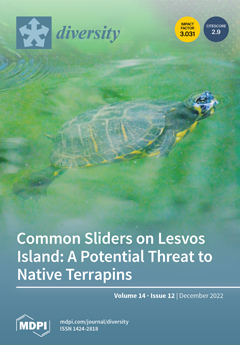Ant nests’ relatively stable and long-lasting microhabitats present ideal living conditions for many uni- and multicellular organisms, whose relationships range from mutualistic to parasitic.
Messor harvester ants inhabit arid and semi-arid open areas where their colonies consist of large numbers of individuals. Due
[...] Read more.
Ant nests’ relatively stable and long-lasting microhabitats present ideal living conditions for many uni- and multicellular organisms, whose relationships range from mutualistic to parasitic.
Messor harvester ants inhabit arid and semi-arid open areas where their colonies consist of large numbers of individuals. Due to the high number of other organisms associated with harvester ants, their nests can be defined as islands for unique biota. Despite significant progress in research on ant-associated fungi in Europe, little is still known about the recently described ectoparasitic fungus
Rickia lenoirii Santamaria, 2015 (Laboulbeniales), found on two species of ants of the genus
Messor. Here we report for the first time the occurrence of the ectoparasitic ant-associated fungus
R. lenoirii from three countries (Albania, Bulgaria, and continental Greece) and multiple localities in the Balkans. The fungus was detected on four ant host species—
Messor structor (Latreille, 1798),
M. wasmanni Krausse, 1910,
M. hellenius Agosti & Collingwood, 1987, and
M. mcarthuri Steiner
et al., 2018 with the latter two representing new host records. Furthermore, spores of the widespread endoparasitic fungus of ants,
Myrmicinosporidium durum Hölldobler, 1933 (Blastocladiomycota), were reported for the first time in
Messor structor (Bulgaria). Images of the ant-associated
Rickia lenoirii taken with a scanning electron microscope, a comparison with
R. wasmannii, and a distribution map are also presented.
Full article





